A car’s engine is the most crucial part of the car and can undoubtedly be likened to the human heart, which pumps blood for movement—the engine, in a similar yet different way, powers energy to other parts of the car.
The B58 engine manufactured by BMW is of notable interest. When getting a car, the engine it embodies is crucial to the purchase; hence, you might want to know its reliability, performance compared to other engines, and common problems it might develop in the future.
The B58 engine succeeds the N55, and it is found in a lot of BMW models and other non-BMW models.
Here Are the Cars with the B58 Engine
The following are cars that embody this engine:
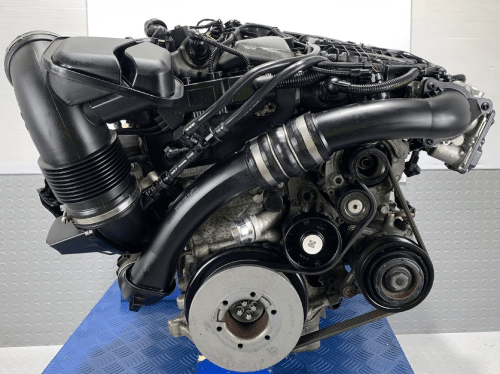
2016 to 2019
- BMW G11/ G12 740i/Li
- BMW F32/ F33/ F36 440i
- BMW F30/ F31/ F34 340i (began 2015)
- BMW F20/F21 M140i
- BMW F22/ F23 M240i (till 2020)
2017 to 2019
- BMW G30/ G31 540i
- BMW F32 640i
- BMW G01 X3 M40i
2018 to present
- BMW G02 X4 M40i (till 2019)
- BMW G05 X5 xDrive 40i
- BMW G07 X7 xDrive 40i
- BMW G29 Z4 M40i
2019 till present
- BMW G14/ G15/ G16 840i (till 2020)
- BMW G20 M340i
- BMW G21 M340i
- BMW G02 X4 M40i
2020 till present
- BMW G06 X6 xDrive 40i
- BMW G30/ G31 540i (2020)
- BMW G11/ G12 740i
- Morgan Plus Six (2020)
- BMW G32 640i
- Toyota Supra (2020)
- BMW F22 M440i
- BMW G01 X3 M40i
2021 till present
- BMW G30/ G31 540i
- BMW G14/ G15/ G16 840i
- Toyota Supra
- BMW G42 M240i
B58 Engine Specs
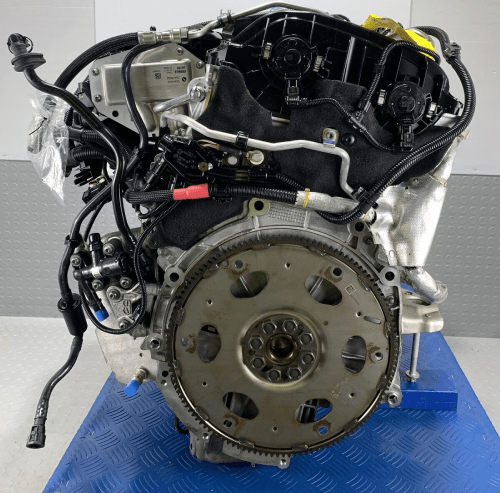
- Cylinder bore – 82mm
- Piston Stroke – 94.6mm
- Compression ratio – 11 to 1
- Displacement – 3L
- Redline – 7000rpm
- Configuration – Straight six
- Block design – closed deck
- Turbocharger – Single twin-scroll (air to liquid intercooler)
- Block material – Closed deck aluminum
- Fuel system – Direct injection
- Supercharger – 48v electrical system starter generator
- Fuel type – Petrol
- Cooling system – water
- Power output – 322 to 382hp
- Torque output – 332 to 369 lb.ft
- Internals – Forged crank and rods
- Dry weight – 306lb
The Most Common Problems With the B58 Engine
If you’re looking into getting a car with the B58 engine, it is essential to be aware of likely problems that might arise during use. The B58 engine is an excellent engine with far fewer common problems when compared to its predecessors, the N54 and the N55.
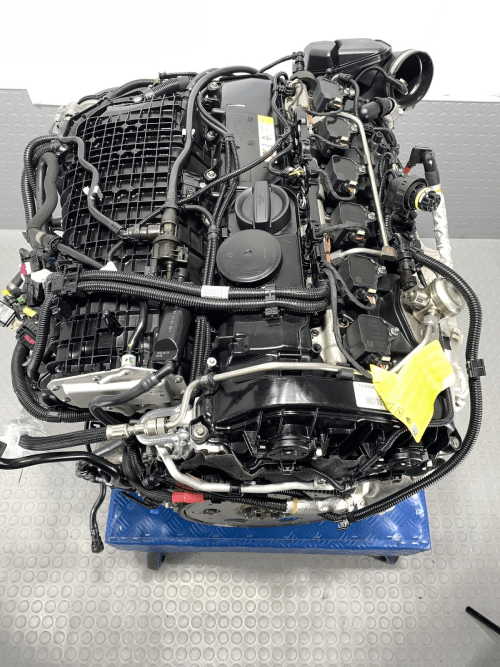
The disintegration of the oil filter
The engine’s oil filter is likely to lose integrity at the bottom, therefore leaving stuck residues in the oil filter housing.
This might result in inadequate filtering of oil in the engine. When this occurs, most owners with their valid warranty change the entire oil filter housing rather than change the oil filter itself.
This is an excellent choice as it eliminates the extra cost of the filter from the owner. However, if you do not possess a valid warranty, you do not need to go through the trouble of changing the entire filter. Instead, the oil filter should be removed, and the remnants pieces stuck in the housing should be carefully removed with a plier or any other suitable tool.
Once the remnant oil filter is removed, the housing system should be cleaned before replacing the filter. It’s important to note that carelessly removing the oil filter remnants can damage the housing system. Therefore, you might require a complete change of the housing system if that happens.
Coolant loss
This is a relatively common problem with the B58 engine. Owners have complained of unnatural loss of coolant without any visible or underlying issue. Some coolant loss cases have been fixed by replacing the coolant tank cap. Common causes of coolant loss include visible leaks, coolant mixing with oil, and overheating.
VANOS Solenoids issue
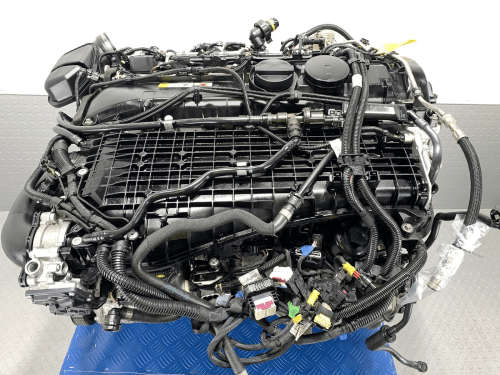
The BMW technical term for VVT (Variable Valve Timing) is VANOS. Ever since the application of the VANOS system in 1992, the system has become a predominant problem and often requires maintenance.
However, the VANOS-related issues on modern turbo engines manufactured by BMW are usually local to the solenoids, and fortunately, the solenoids are relatively cheap.
However, the timing chain of the B58 isn’t located at the front of the engine. Instead, it is found at the back. People often assume the engine has to be lifted to replace the solenoids with this unexpected position.
In reality, the solenoids can be replaced with the appropriate tools without lifting the engine, but this might be a hassle compared to BMW engines with their timing chain at the front.
If your VANOS solenoid develops issues, you will notice power loss, rough idle, engine bogging and sluggishness, bad fuel efficiency, and VANOS fault codes.
Please note that the signs mentioned above might occur even when the solenoid is working properly. They could result from faulty injectors, bad spark plugs, or worn-out ignition coils.
VANOS solenoids are not components that stop working instantly, thus indicating that issues arising from solenoid use result from age-related deterioration.
Possible oil leaks
This can be expected after about 70 000 to 100 000 miles, and it can be detected with oil on spark plugs, burning oil smell, smoke arising from valve cover area, and low engine oil light indication.
The B58 engine is designed with a heat encapsulation system that encloses heat for about 36 hours, thereby increasing the lifespan of the gasket compared to other engines that go through the continuous heating and cooling process more often.
Related content: What Cars Have the LS3 Engine?
Does the Supra Have the B58?
Yes. The B58 engine is included in the Toyota Supra model year 2020 and 2021.
However, the B58 engine in the Toyota Supra 2020 received some criticism from fans of the model. They were reportedly disappointed at the engine’s low stock power and torque output.
The 2021 model (382hp) was a step up as it features an upgraded B58 engine with about a 47 horsepower increase from the previous model.
Is the B58 a Reliable Engine?
The N54 engine was fortified with strength but lacked reliability. The next engine, N55, stepped up on reliability but still underwent popular engine issues, missing out on power.
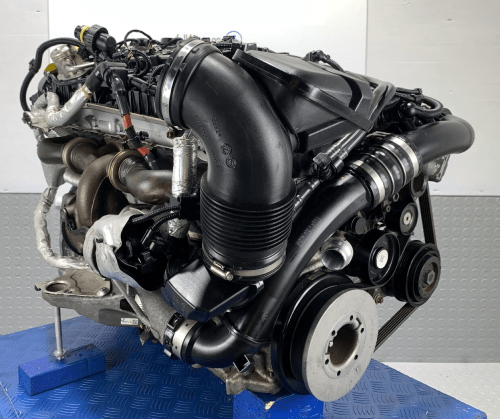
The release of the B58 engine retained the strength of the N54 and matched it with the increased reliability of the N55. The design is a near-flawless one. Little wonder Toyota used it in the Supra for two consecutive models.
Why Is the B58 So Good?
The engine is remarkable as it combines versatility, high stock power, affordability, and upgraded modern design into a near-perfect wrap.
The engine is used in power performance cars, luxury cars, and even heavy cars such as the X7 xDrive 40i. You’d be impressed driving the X7 xDrive 40i, knowing that the same engine is used in power performance cars.
The engine is designed in such a way that its work and efficiency perfectly suit the car, which embodies it.
How Much Horsepower Can the B58 Handle?
Although the B58 engine is a fantastic combination of strength and reliability, it is yet to achieve the height of indestructibility. The engine can take on 600 to 650 hp and even go as far as 700.
You might then wonder, how long does the engine last?
Despite the high stock power B58 possesses, it is important to note that the more you push the limits of an engine, the more risks you open it to. Therefore, using the engine at a high stock power for extremely long periods can harm the engine.
On average, with timely maintenance and appropriate repairs, the engine’s internals and overall design can go well over 200000 miles.
Which Is Better 2JZ or B58?
Both engines are set apart by about two decades of engineering design. The 2JZ is the second engine in the JZ family by Toyota and was built when Toyota exaggerated its engineering designs.
The 2JZ is very strong and durable, but the cast iron used for the body is too heavy. On the other hand, B58 used aluminum which is not as strong as cast iron, but it offers a notably lighter weight and better thermals.
Both engines are capable of handling over 600 hp and are reliable despite the difference in designs. 2JZ comes with a more straightforward design than B58’s modern complicated design.
Overall, with the older design and engineering skills, the 2JZ-GTE (which is the top of the 2JZ variations) is very impressive for conveniently competing with a far newer engine. Still, the B58 engine with an upgradable design shows more promise in the long run.
Is B58 Better Than N55?
B58 engine offers more reliability and strength in comparison to its predecessor. The closed deck block design on the newer engine is a good step up from the open deck block on N55.
The B58 engine has similar designs to the N55, but it is a whole new rebrand of the latter.
Bottom Line
The B58 engine is excellent for consideration when buying a new car. The engine offers high stock power, and the problems are not predominant.
The coolant issue is a minor issue that can be corrected immediately. Deterioration of oil filters occurs more often but in most cases are not serious. The valve cover oil leaks and the VANOS faults only happen with age.
My name is Jeffrey Williams and I have been a car mechanic for over 35 years. I am currently working NYC Auto Repair Shop, in New York City and recently developed a strong passion about blogging. I decided to put together this blog where I will try and answer the most commonly asked questions I get on a daily basis from my customers.








